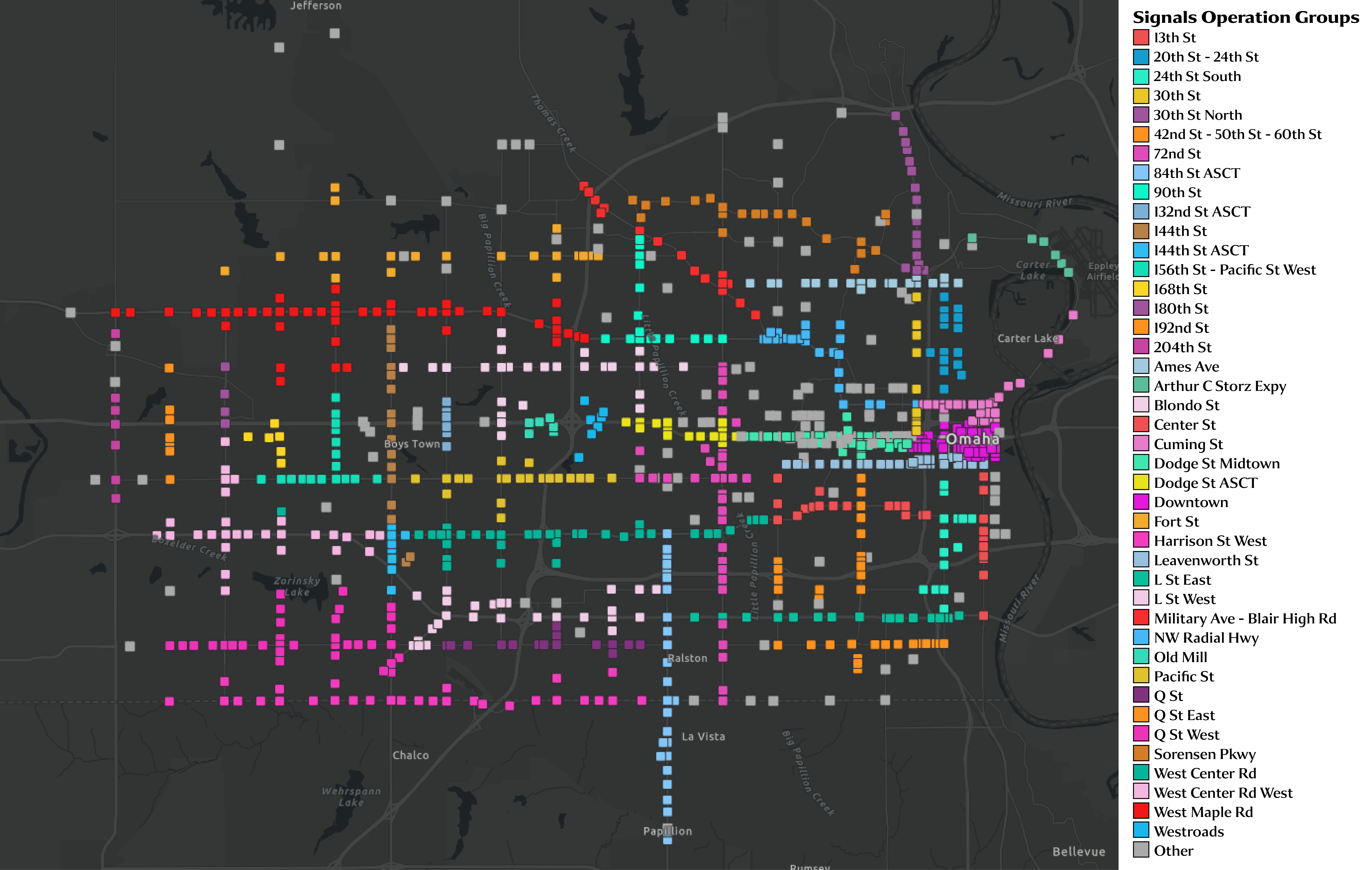Traffic Signal Corridor Retiming
The Omaha Public Works Department is updating timing plans to reflect current traffic patterns. The main strategy is to prioritize mainline travel during peak periods and reduce intersection delays during off-peak times.
These efforts will coincide with Traffic Signal Infrastructure Upgrade projects to leverage new technology, such as flashing yellow arrows and improved traffic sensors.
Project Features
- Shortened Travel Time
- Reduced Fuel Consumption
- Decreased Vehicle Emissions
- Increased Safety
- Increased Travel Time Reliability
- Complete:
- 72nd St
- West Center Rd
- L St/Q St
- Dodge St Midtown
- 144th St and Q St
- 90th St and Blondo St
- 2025:
- West Maple Rd/Fort St
- Center St/42nd St/60th St
- 2026:
- L St East
- Q St East
- 13th St
- Pacific St
- Old Mill/Miracle Hills
- 2027
- West Center Rd West
- 156th St & Pacific St
- Ames Ave
- 30th St North
- 2028:
- 72nd St North
- Sorensen Pkwy
- NW Radial Hwy/Cuming St
- 30th St
- 2029
- Leavenworth St
- 24th St South
- Cuming St/NODO
- 20th St/24th St
- 2030
- Downtown
- Harrison St
- Q St West
- 2031
- 168th St
- 180th St
- 192nd St
- 204th St
Document Library
Design Plans, Studies & Reports
144th STREET AND Q STREET SIGNAL OPERATIONS
90th STREET AND BLONDO STRET SIGNAL OPERATIONS
L STREET, Q STREET
-
Travel Time Compilations
72nd STREET SIGNAL OPERATIONS
-
Travel Time Compilations
WEST CENTER ROAD SIGNAL OPERATIONS
-
Travel Time Compilations
DODGE STREET MIDTOWN SIGNAL OPERATIONS
Community Engagement
Contact the Project Team
Project Contacts
Bryan Guy, PE, PTOE
Project Manager, Public Works
City of Omaha
402-444-5220




